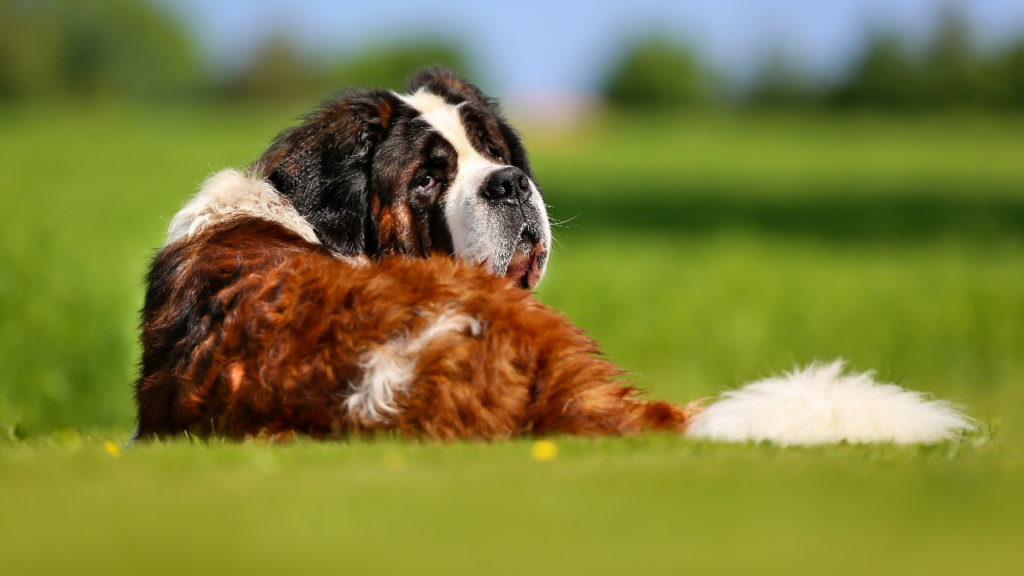
If you’re the proud owner of a large breed dog, you understand the joy these gentle giants bring to your life.
Breeds such as Saint Bernards, Great Danes, and Mastiffs special qualities.
A unique blend of affection and strength that make them beloved companions.
But with their impressive size come certain susceptibilities.
A set of common issues for large breed dogs that you, as a caring pet parent, should be aware of.
From joint problems to specific heart conditions.
Large dogs face a different set of challenges compared to their smaller counterparts.
Understanding these common health problems for large dog breeds is essential in providing the best care.
Ensuring a long, happy life together.
Table of Contents
ToggleKey Takeaways
- Large breed dogs often experience unique health issues due to their size and genetics.
- Common concerns include joint issues like dysplasia, heart conditions, and bloat, which can be managed with proactive care.
- Maintaining a nutritious diet is crucial for managing health risks associated with large dogs.
- Regular veterinary check-ups are essential for early detection of health problems in large breeds.
- Understanding and recognizing the signs of common ailments can lead to prompt and effective treatment.
- Providing low-impact exercise can help mitigate joint stress and prolong your dog’s mobility.
- Tailored insurance cover to your dog’s breed.
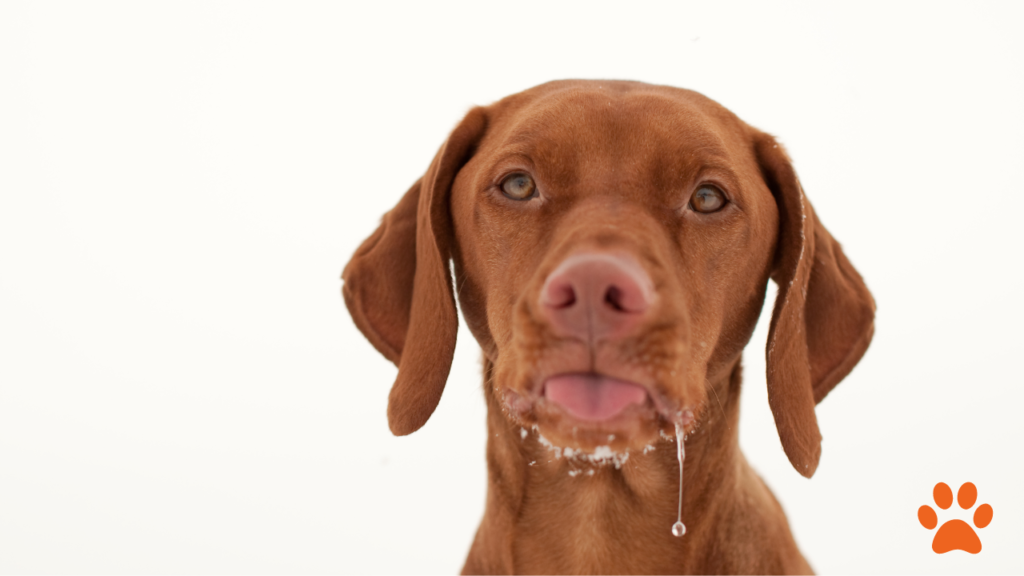
Common Issues For Large Breed Dogs
Potentially Fatal Bloat: A Big Dog Emergency
If you’re the owner of a large breed dog, one of the most significant health concerns for big dogs that you need to be aware of is bloat.
Also known as gastric torsion or GDV.
This condition can be life-threatening.
It requires emergency veterinary care as soon as symptoms are noticed.
Bloat in dogs describes a situation where the stomach fills with air and twists upon itself.
Effectively trapping the gas within.
This can rapidly lead to a swollen abdomen, discomfort, and serious health complications.
Especially if not addressed immediately.
Some signs that your dog might be experiencing bloat include:
- A noticeably swollen or painful abdomen
- Unsuccessful attempts to vomit or retch
- Excessive drooling
- Apparent restlessness or agitation
- Rapid breathing or shortness of breath
This condition is especially prevalent in breeds with deep chests like the Weimaraner or the Great Dane.
The rapid progression from the onset of symptoms to shock means that understanding and quickly responding to the signs of bloat could save your dog’s life.
| Symptom | Description | Immediate Action |
|---|---|---|
| Swollen Abdomen | The dog’s belly may appear enlarged and feel tight to the touch. | Seek veterinary care immediately. |
| Attempting to Vomit | The dog may make retching noises and movements but nothing comes up. | Do not wait for further symptoms; go to the vet right away. |
| Restlessness | Pacing, inability to get comfortable, or an anxious demeanor. | Quickly take your dog to receive medical attention. |
| Rapid Breathing | Short, quick breaths or an inability to catch their breath. | Contact your emergency vet clinic en route to inform them you’re coming. |
In cases of bloat, the faster you act, the better your dog’s chances of recovery.
The importance of knowing these signs and having a plan for quick action cannot be overstated.
This includes knowing the location of your nearest 24-hour veterinary clinic.
Time is of the essence when it comes to combating GDV in large breeds—a delay in treatment can be fatal.
Recognizing and Managing Arthritis in Large Canines
Arthritis in dogs can be a significant hindrance to their well-being.
Especially in large breeds.
Arthritis can cause joint degeneration and chronic pain.
Understanding the connection between your dog’s size and joint health is pivotal.
This helps you in managing dog arthritis effectively and alleviating joint pain.
Here’s how you can recognize arthritis symptoms and manage the condition.
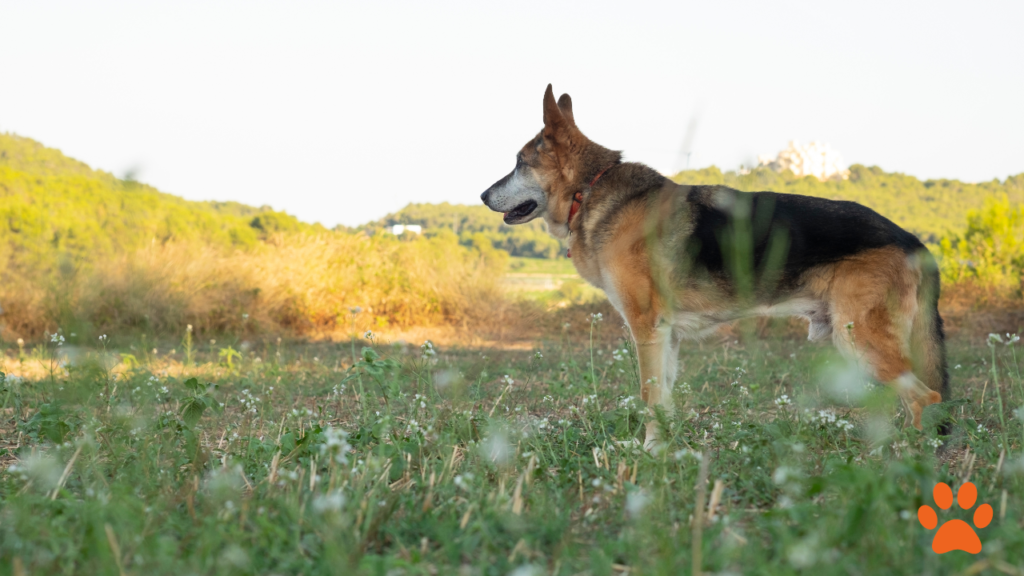
The Link Between Size and Joint Wear in Large Breeds
Large breeds such as Rottweilers and Mastiffs are prone to canine osteoarthritis.
This is due to their substantial body mass and rapid growth patterns.
The increased weight puts added stress on joints, accelerating joint degeneration.
Symptoms like stiffness after rest, hesitation to jump or climb stairs, and changes in gait can be telling signs of the onset of arthritis.
These physical changes often translate into behavioral changes.
You may notice signs such as irritability or a decrease in activity levels.
Strategies for Relieving Arthritic Pain in Your Giant Dog
When managing arthritis in your companion, a multifaceted approach can be most effective.
Pain relief often begins with anti-inflammatory medications prescribed by your veterinarian.
Additionally, supplements such as glucosamine may help, providing the essential building blocks for cartilage repair and joint health.
- Medications: Nonsteroidal anti-inflammatory drugs (NSAIDs) are commonly used to reduce inflammation and pain.
- Supplements: Ingredients like glucosamine, chondroitin, and omega-3 fatty acids may support joint function and decrease discomfort.
- Assistive devices: Harnesses and ramps can help your dog navigate their environment with less pain.
Lifestyle Adjustments to Support Dogs with Arthritis
Adjusting your large breed dog’s lifestyle is essential to alleviate symptoms and improve quality of life.
Moderate, low-impact exercise such as swimming can maintain muscle strength without overburdening the joints.
Weight management is crucial, as obesity can intensify joint stress.
Special orthopedic dog beds provide extra cushioning to soothe painful joints, ensuring better rest.
| Lifestyle Change | Benefits |
|---|---|
| Controlled weight | Minimizes stress on joints, slowing progression of arthritis |
| Adapted exercise | Maintains muscle strength, flexibility, and joint mobility |
| Orthopedic support | Improves comfort during rest, helping to reduce pain and stiffness |
Remember, early recognition and proactive management of arthritis can greatly contribute to your large breed dog’s comfort and mobility.
With your love and support, along with veterinary guidance, you can offer your furry friend a happier, more pain-free life.
The Menacing Heart Risk: Dilated Cardiomyopathy
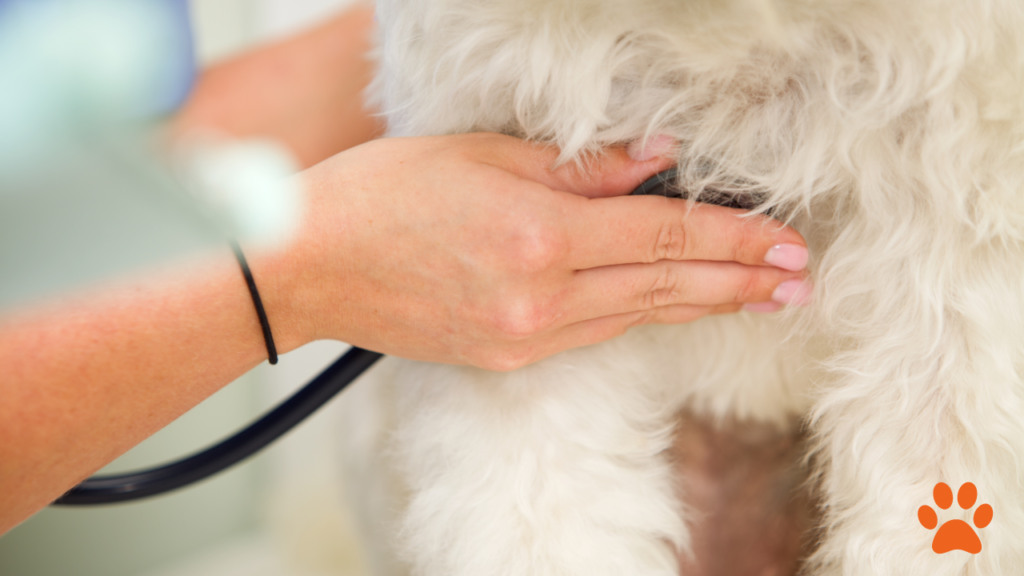
Dilated cardiomyopathy in dogs is a serious condition that you, as a large breed dog owner, might have to confront.
This heart condition leads to a weakened and enlarged heart, which compromises its ability to pump blood.
Breeds like Great Danes, Doberman Pinschers, and Scottish Deerhounds are particularly at risk.
Initially, dilated cardiomyopathy may not present obvious symptoms.
It’s crucial for you to be aware of subtle changes.
Be on the lookout for signs such as subtle fatigue, mild coughing, or slightly more labored breathing.
As the disease progresses, these symptoms can become more pronounced.
Initial symptoms include breathing difficulties, frequent coughing, extreme fatigue.
Sometimes a large dog may present with a swollen abdomen due to fluid buildup.
While a cure remains elusive, you can take steps to manage your dog’s quality of life.
This includes medication, proper diet, and regular exercise.
Here’s a breakdown of potential medications:
| Medication | Use | Improve/Manage |
|---|---|---|
| ACE inhibitors | To help manage blood pressure and reduce heart strain | Blood circulation and overall heart function |
| Diuretics | To remove excess fluid from the body | Swelling and breathing difficulties |
| Beta-blockers | To slow heart rate and reduce oxygen demand | Heart workload and progression of disease |
| Positive inotropes | To increase the force of the heart’s contractions | Heart’s pumping ability and symptoms of fatigue |
Routine veterinary check-ups are essential for early detection and management of dog heart disease.
Regular ECGs and echocardiograms can help monitor your dog’s heart health and allow for timely adjustments to their treatment plan.
- Monitor your dog’s energy levels and appetite
- Be attentive to changes in breathing or coughing
- Schedule regular veterinary visits for heart health screenings
- Consult your vet for a diet that supports heart health
- Ensure your pet gets appropriate amounts of exercise
By staying informed and proactive, you can play a pivotal role in managing dilated cardiomyopathy in dogs and securing the best possible care for your beloved companion.
Understanding Hip and Elbow Dysplasia in Large Dogs
Hip dysplasia in dogs and elbow dysplasia are amongst the most widespread breed genetic disorders.
These are conditions affecting joint health in large breeds.
As the owner of a large dog, understanding these conditions is critical to promoting a healthy, active lifestyle for your furry friend.
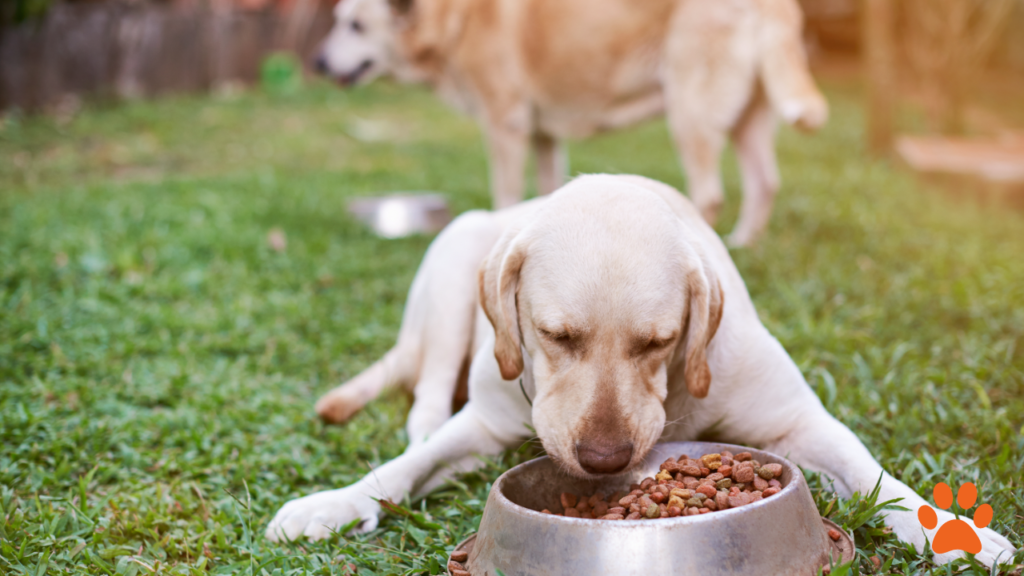
Defining Hip Dysplasia and Its Impact on Large Breeds
Hip dysplasia is a developmental disorder characterized by a malformation of the hip joint.
This condition is particularly prevalent in large breeds such as St. Bernards and German Shepherds.
Leading to arthritis and long-term mobility issues.
As a genetic disorder, hip dysplasia often gets passed down from parent to offspring.
This makes selective breeding and genetic testing vital preventative measures.
Recognizing the Signs of Elbow Dysplasia in Giant Breeds
Elbow dysplasia, similar to its hip counterpart, affects the elbow joints.
It is known to create significant discomfort in affected dogs, particularly breeds like Great Danes.
Key indicators of elbow dysplasia include an irregular gait, stiffness after rest, and a reluctance to play or climb stairs.
Early diagnosis and intervention are essential to manage the symptoms and maintain your dog’s quality of life.
Nutritional and Genetic Factors Influencing Joint Health
Nutrition plays a pivotal role in managing the risk and impact of joint dysplasia.
Optimal nutrition supports controlled growth in puppies.
This is crucial for preventing the excessive strain on developing joints.
Maintaining your dog at an ideal weight can lessen the burden on their joints.
This could potentially reduce the severity of symptoms should they develop dysplasia.
In severe cases, where diet and exercise alone cannot manage the condition, surgical options may be considered.
This will aim to improve your dog’s mobility and alleviate pain.
It’s important to consult with your veterinarian about the best course of action for your dog’s specific needs.
Eyelid Conditions Peculiar to Large and Giant Dog Breeds
Owners of large and giant dog breeds such as Great Danes, Mastiffs, and Saint Bernards are often concerned with maintaining optimal eye health for their pets.
Various eye conditions can specifically affect these dogs.
Some of which are a result of the unique facial structures and genetic traits attributed to these breeds.
Understanding these conditions, their symptoms, and treatment options is essential for keeping your dog comfortable and their vision intact.
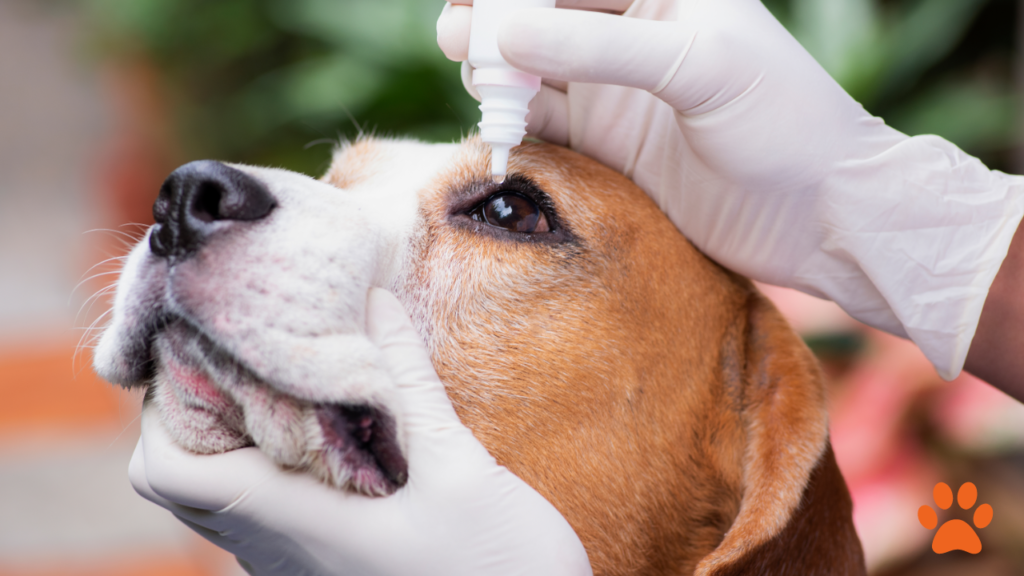
Entropion and Ectropion: Complications and Treatments
Both entropion and ectropion are notable eyelid disorders found in large breeds.
Entropion in dogs can cause great discomfort.
This can lead to more serious complications such as corneal ulcers if left untreated.
Conversely, ectropion creates an abnormal appearance and may result in dryness.
Here’s an overview of remedies and interventions you can discuss with your veterinarian:
| Condition | Symptoms | Non-Surgical Treatments | Surgical Treatments |
|---|---|---|---|
| Entropion | Squinting, tearing, redness, corneal ulcers | Lubricating ointments, temporary tacking of the eyelids | Permanent eyelid correction surgery |
| Ectropion | Droopy eyelids, discharge, conjunctivitis | Artificial tears, antibiotic ointments | Corrective surgical procedures |
Cherry Eye: Understanding and Addressing the Prolapse
Another prominent issue that can trouble large dogs is the cherry eye condition.
Recognizable by a distinctive red bulge in the corner of the eye.
This gland prolapse, if left untreated, could lead to dry eye or other secondary conditions.
Cherry eye can sometimes be managed with anti-inflammatory medications.
Surgery is often recommended for a permanent solution, repositioning or removing the affected gland.
The Importance of Regular Eye Examinations for Your Large Breed Dog
Prevention and early detection are keys to ensuring the eye health in large dogs.
Annual examinations by a veterinarian can help to diagnose issues like entropion, ectropion, or cherry eye in their earliest stages.
Take note of any changes such as redness, swelling, or discharge, and ensure they are addressed promptly.
Ultimately, maintaining your furry friend’s eye health is an integral part of their overall well-being.
Preventing Common Health Issues in Large Breed Dogs
As the guardian of a large breed dog, your role in promoting animal wellness is crucial.
With the right preventive care for dogs, you can help your dedicated companion avoid some of the common health issues that affect their quality of life.
Starting with their foundational years, managing their growth and ensuring they flourish into healthy adulthood is in your hands.
Let’s delve into how you can protect your gentle giant’s health.
Importance of a Balanced Diet and Controlled Growth
The journey to wellness begins with a balanced diet for large breeds.
Excess nutrients can be just as detrimental as deficiencies.
This could possibly accelerate growth and developmental problems like hip dysplasia.
It’s important to feed your dog a diet specifically formulated for their breed and size.
Follow feeding guidelines and consult your vet to adjust meals as necessary, ensuring controlled growth during your pup’s formative stage.
Exercise: Necessary for Muscle Strength But a Balance is Key
Exercise for large dogs serves dual purposes: it keeps them fit and aids in preventing obesity.
However, this can add stress to their joints.
While exercise is important for maintaining muscle strength, remember that a balance is key.
Over-exercising, especially on hard surfaces, can lead to joint damage in the long run.
Engage in low-impact activities, such as swimming or walking on soft ground, to keep your dog active and safe.
Routine Health Screenings: Early Detection and Management
Regular health screenings for big dogs can make all the difference in the longevity and vitality of your pet.
These screenings help in the early detection of diseases and conditions that may not be immediately apparent.
Make sure your dog gets comprehensive check-ups.
This may include heart monitoring, joint exams, and blood tests as recommended by your vet.
This proactive approach is instrumental in catching potential health issues early and managing them effectively, ensuring your dog lives a happy, healthy life.
Charting a Healthy Path for Your Large Breed Canine
As the custodian of a large breed puppy or giant breed dog, you’re entrusted with more than just a pet.
They’re a powerful symbol of loyalty and companionship that comes with unique needs.
A key fact to remember is that the health challenges of big dog breeds.
They are intrinsically tied to their majestic size and distinctive genetics.
Keen awareness and a deep understanding of conditions such as bloat, arthritis, and dilated cardiomyopathy are fundamental.
Recognizing the signs of joint dysplasia and eyelid irregularities like entropion and ectropion will equip you with the insight to navigate these health concerns proactively.
Your commitment to improving the quality of life for large dogs lies in establishing and maintaining a steadfast wellness regime.
This includes providing balanced nutrition specifically tailored to sustain the growth and energy of large breed dogs.
Facilitating an exercise regimen that’s sufficiently vigorous yet mindful of their joint health.
And ensuring regular visits to the veterinarian for comprehensive health screenings.
These practices form the cornerstone of early detection and effective management of any health issues that may arise.
They are instrumental in fostering an environment for your dog to thrive.
Frequently Asked Questions
What Is A Common Health Issue For Large Dogs?
A prevalent health issue among large dog breeds is hip dysplasia. This genetic condition occurs when the hip joint fails to develop correctly, leading to a loose fit between the hip joint and thigh bone. It can cause pain, lameness, and arthritis over time. Large dogs are particularly susceptible due to the stress their size places on their joints. Preventative measures include proper diet, regular exercise, and in some cases, surgical intervention to alleviate symptoms and improve quality of life.
Are Large Dog Breeds Hard To Take Care Of?
Caring for large dog breeds presents unique challenges compared to smaller breeds. Their size requires more space for comfortable living and exercise. They often have higher food consumption, which can increase the cost of upkeep. Large dogs also tend to have specific health needs and may require more medical attention as they age, including potential for joint issues and heart conditions. Despite these challenges, with proper care, training, and attention to health, large dog breeds can be incredibly rewarding companions, offering loyalty and affection in large measures.
What Is the Lifespan Of A Large Dog?
The lifespan of a large dog breed typically ranges from 8 to 12 years, though this can vary significantly based on the specific breed, health care, and genetic factors. Larger breeds tend to have shorter lifespans compared to their smaller counterparts due to the strain their size puts on their bodies, leading to higher susceptibility to joint problems, heart diseases, and other health issues. Proper care, including regular veterinary check-ups, a balanced diet, and adequate exercise, can help maximize a large dog's life expectancy and quality of life.
What Is The Healthiest Large Dog Breed?
Determining the healthiest large dog breed is challenging, as health can vary widely even within a breed. However, some breeds are known for their overall robustness. The Alaskan Malamute and Siberian Husky, for example, are often cited for their hardiness, having been bred for endurance and to withstand harsh climates. These breeds tend to have fewer genetic health issues compared to others, but like all dogs, they require proper care, including regular exercise, a healthy diet, and preventative veterinary care to maintain their health.
What Is Cherry Eye In Dogs?
Cherry eye in dogs refers to a condition where the gland of the third eyelid, also known as the nictitating membrane, becomes prolapsed or displaced, creating a visible red or pink mass in the corner of the eye. This condition is relatively common in certain breeds and can affect one or both eyes. While not typically painful, it can lead to complications such as dry eye, inflammation, and infection if not treated. Treatment often involves surgical replacement of the gland to its original position to prevent further issues and maintain the dog's eye health.
